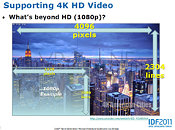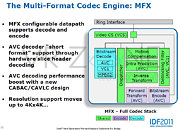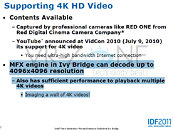qubit
Overclocked quantum bit
- Joined
- Dec 6, 2007
- Messages
- 17,865 (2.80/day)
- Location
- Quantum Well UK
| System Name | Quantumville™ |
|---|---|
| Processor | Intel Core i7-2700K @ 4GHz |
| Motherboard | Asus P8Z68-V PRO/GEN3 |
| Cooling | Noctua NH-D14 |
| Memory | 16GB (2 x 8GB Corsair Vengeance Black DDR3 PC3-12800 C9 1600MHz) |
| Video Card(s) | MSI RTX 2080 SUPER Gaming X Trio |
| Storage | Samsung 850 Pro 256GB | WD Black 4TB | WD Blue 6TB |
| Display(s) | ASUS ROG Strix XG27UQR (4K, 144Hz, G-SYNC compatible) | Asus MG28UQ (4K, 60Hz, FreeSync compatible) |
| Case | Cooler Master HAF 922 |
| Audio Device(s) | Creative Sound Blaster X-Fi Fatal1ty PCIe |
| Power Supply | Corsair AX1600i |
| Mouse | Microsoft Intellimouse Pro - Black Shadow |
| Keyboard | Yes |
| Software | Windows 10 Pro 64-bit |
The new Ivy Bridge processors, due out in about six months, have one apparently overlooked but important feature. No, it's not the greatly increased speed (about double or more of Sandy Bridge) or the advanced feature set. It's actually the super-high resolution capability: specifically 4096 x 4096 pixels. This astonishing capability is far better than any of the top-end discreet graphics cards such as the NVIDIA GTX 590 or AMD HD 6990 via a single monitor port. It's so high in fact, that there's almost no content at that resolution and no monitor that can handle it. This IGP can actually play multiple 4K video streams, too. NVIDIA unsurprisingly, is talking up the gaming possibilites at such a resolution. I'd like to see what kind of monster GPU could handle it. It will be interesting to see what uses this capability gets put to generally - and just how much the whole setup will cost.



View at TechPowerUp Main Site



View at TechPowerUp Main Site


 man I love intel
man I love intel yeah that's the ticket
yeah that's the ticket

